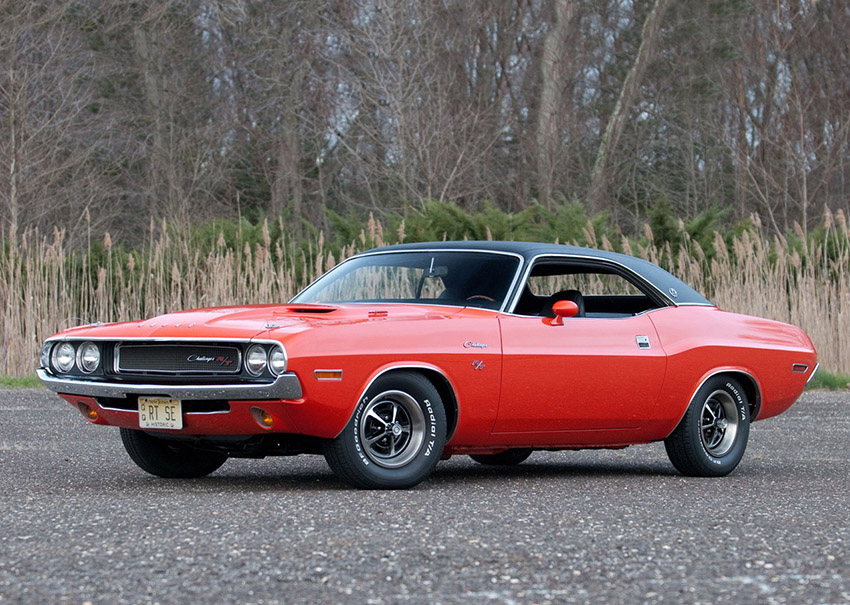As we move ever closer to all electric motoring, we’ve compiled a list of the top 10 American muscle cars, six classic and four modern, to celebrate all that’s great about V8 muscle.
Muscle cars are a quintessentially American creation. Sure, in recent years there have been some big engine/rear-wheel-drive/two-door formula cars from Europe and Asia (Mercedes C63 AMG, Lexus RC F and so on); a true-blue muscle car has its roots in a very specific set of historical and geographic circumstances. Post-war America was experiencing a consumer boom the like of which had never been seen before. It had a hugely blossoming market for domestic appliances like big fridges and fancy cookers that were more advanced and more affordable than they’d ever been; the nation was surfing the crest of a capitalist wave; it had the best fashions, the most abundant and delicious foods, the most desirable exports, and the cheapest petroleum.
The birth of American Muscle Cars
It’s this cash-rich and fancy-free culture that led to the rise of big-engined cars; it may have become a bit of a cliché that large-displacement American V8s made far less power than their small-scale British or German or Japanese equivalents. However, the fact of the matter is that America simply didn’t need to be efficient. They had loads of fuel, and it was cheap. Detroit could afford to be extravagant.
And so arrived the muscle car; performance machines aimed at youths who had money to spend and wanted huge horsepower for Friday night drag-racing between traffic lights. The die was cast, the legend was born, and the rest of the world has been eddying in the turbulence of the American muscle car ever since.
As you might imagine, narrowing down a top 10 of the very best American muscle cars was fairly tricky. We argued about it quite a bit. But the shortlist we’ve got here, a mix of old and new, represents some of the all-time old-school legends. It also features a few modern innovations that are continuing to carry the torch. No doubt you’ll have a bunch of cars in mind that you think should have made the list; let us know!
Best American Muscle Cars
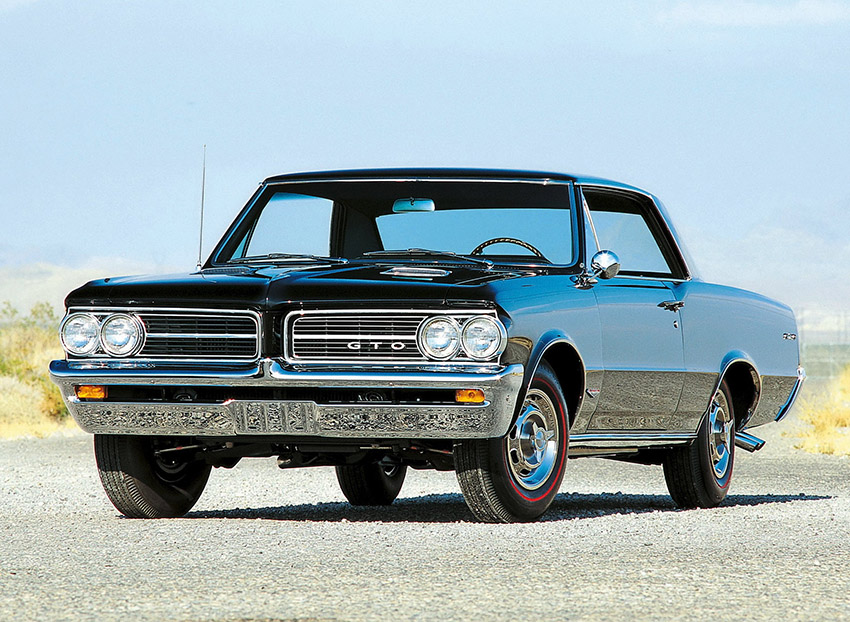
Pontiac GTO
We had to begin our top 10 American muscle cars list with this one, because it’s the original. The start of it all. The first muscle car. Born out of sheer cheekiness, the firm built the 1964 Pontiac GTO because it didn’t enjoy being pushed around by its parent company, General Motors. Pontiac’s motorsport division and their racing endeavors had raised brand awareness to such a degree that the firm had become the number-three marque in the US; behind Chevrolet and Ford. When GM told Pontiac to get out of racing, the designers and engineers reacted by creating the GTO; stealing the Gran Turismo Omologato name from Ferrari, the GTO option for the Pontiac Le Mans saloon shoehorned a 325bhp 389ci V8 under the bonnet.
Some may tell you that the Oldsmobile Rocket 88 or the Chrysler 300 invented the muscle car idea in the 1950s. However, if you’re looking for the birth of the classic formula (i.e. a massive engine in a mid-size car), it all began with the GTO in 1964.
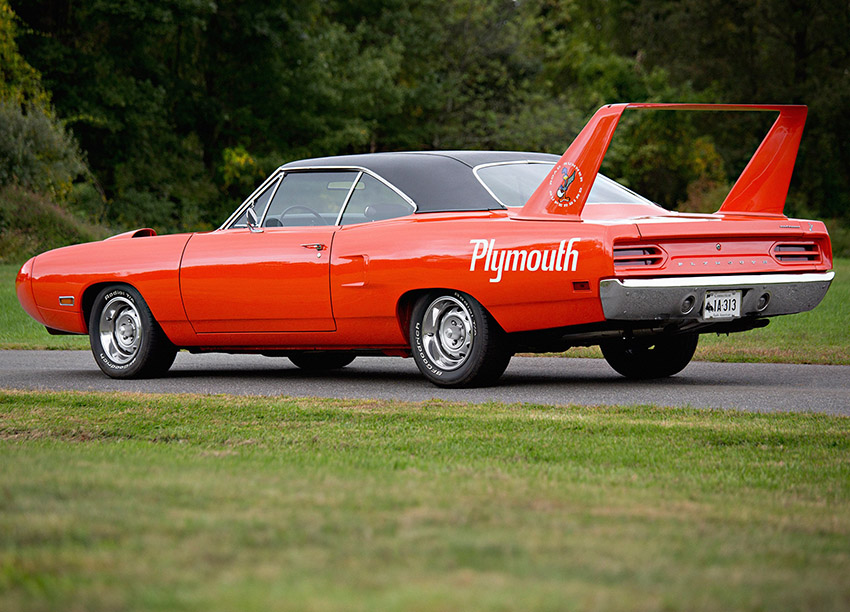
Plymouth Road Runner Superbird
Muscle cars and drag-racing have always gone hand-in-hand, but the motorsport angle is far deeper than just illicit burnouts at the drive-thru. Manufacturers were keen to take these road-racers to actual race tracks to flex their muscles and show the public just how competent and impressive these cars were. In NASCAR, it all started to get a bit silly. Arguably the most significant chapter opened in 1970, with the inception of the Superbird evolution of Plymouth’s Road Runner.
The base car was impressive enough. The Road Runner packed a 440ci V8 or the option of the iconic 426ci Hemi. But it was the Superbird took things to another level. Quite literally. That towering rear spoiler was wonderfully absurd. The extended nosecone offered genuine aerodynamic benefits on track; so much so that NASCAR changed the rules to make so-called ‘aero cars’ have smaller engines and carry ballast to slow them down. And while these cars were tricky to shift from the forecourts in period (extreme styling), today they’re highly sought after. This is why it had to feature on our top 10 American muscle cars list.
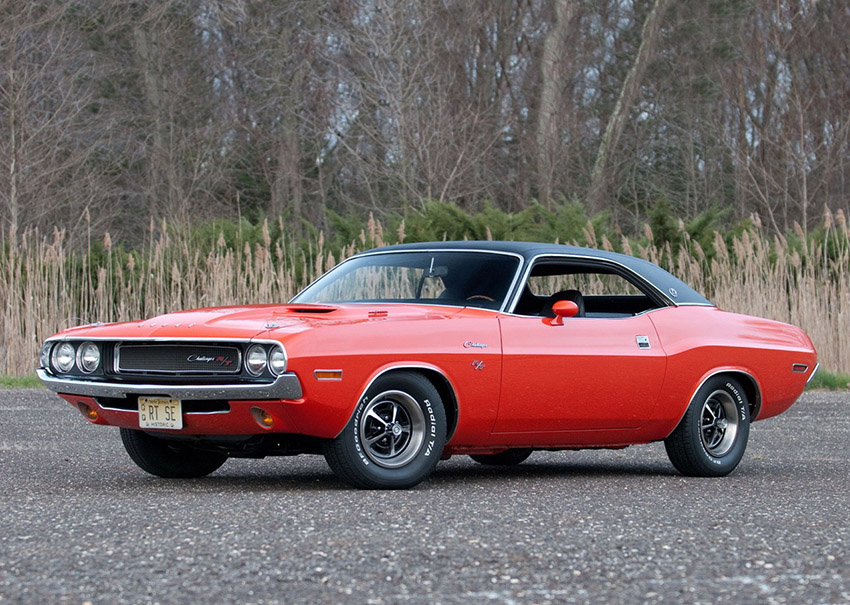
Dodge Challenger R/T
The Dodge name has been synonymous with muscle car lore for generations. You didn’t think we could leave it out of our top 10 American muscle cars list, did you? The temptation to put the ’68 Charger in here was strong, but in the end we had to give the nod to the first-generation Challenger R/T. Because this was Kowalski’s car. And if you’ve never seen the movie Vanishing Point, you need to put that at the top of your to-do list.
The 1970 Dodge Challenger R/T is, by any measurable scale, the ultimate muscle car: a beautiful and aggressive two-door coupe profile, a choice of astonishing engines (either the 390bhp 440 Magnum Six-Pack, or the 425bhp 426ci Hemi), and a cheap sticker price that meant the more well-heeled teens could be burning out those cross-plies in the high school parking lot. And when Kowalski went on his legendary freedom drive in that iconic 1971 movie, the Challenger R/T shifted firmly into legend status.
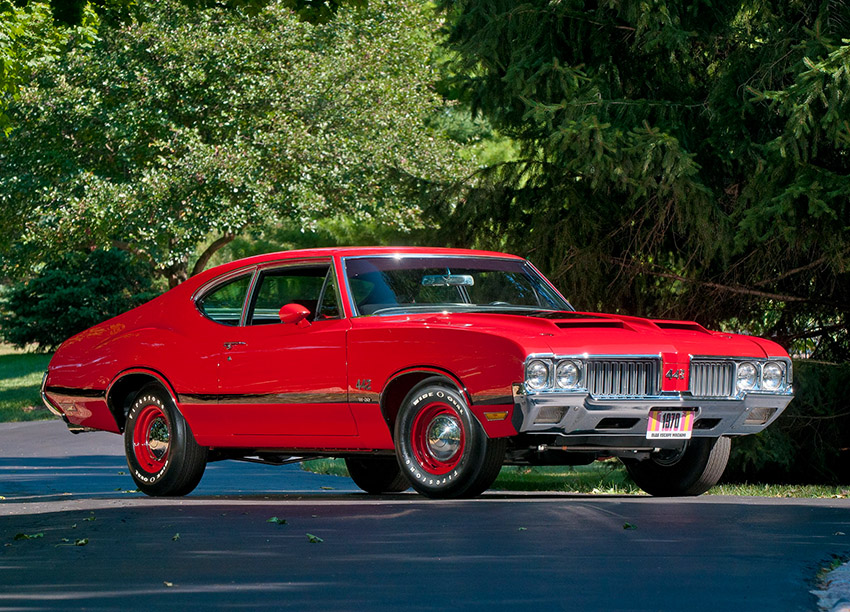
Oldsmobile 4-4-2 W-30
The Oldsmobile 4-4-2 W-30 isn’t the first thing that most people would come up with when you pose the challenge ‘name me a muscle car’, but it fully deserves a place in this top 10 American muscle cars list because it’s just such an incredible machine. When the 4-4-2 option pack first appeared in 1966, it made it way into a number of models (including the Cutlass Sport Coupe, Deluxe Holiday Coupe and Cutlass Convertible), serving up something that no other muscle car did: luxury.
It offered 350bhp from its 400ci motor, but also came with a comfortable and highly-specced interior. By 1971 the 4-4-2 was a model in its own right, a full-on muscle coupe, and the introduction of the W-30 spec served up a surprise. You see, in the early seventies, regulators were becoming increasingly stringent on emissions and efficiency, and Oldsmobile relented by fitting its 455ci V8 with dished pistons and other tweaks to strangle the horsepower; 350bhp was decent but didn’t sound all that competitive when you consider the rivals on the market. But the 4-4-2 W-30’s secret weapon was its torque: 460lb.ft of it. And on the drag-strip, torque talks.
Only 810 examples of the ’71 4-4-2 exist with the 455ci motor; that really makes this one the connoisseur’s muscle car.
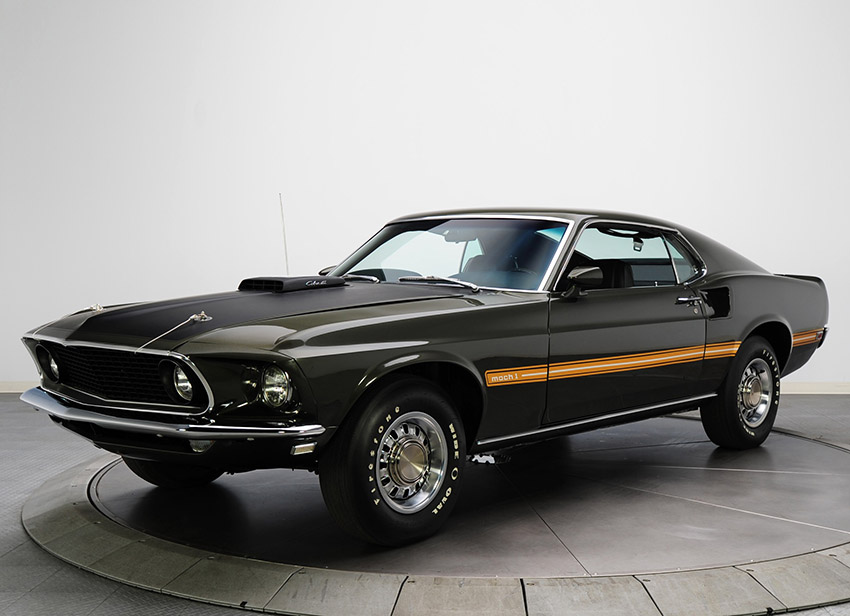
Ford Mustang GT 428 SCJ
Well, how do you narrow it down to just one classic Mustang on a top 10 American muscle cars list? There were so many icons – the Bullitt fastback, the Shelby GT500, the Hertz Rent-a-Racer… but for us, it’s the SCJ that takes the crown. Standing for Super Cobra Jet, this represents the height of Mustang fever when, in 1969, Ford went a bit bonkers and started trying to compete with itself. The brutal Mustang Mach 1 was on the market and winning hearts on street and strip, and this was harming sales of the Mustang GT (supposedly a lesser model, but actually very similar in spec)… so Ford took the unusual move of amping up the GT to make it competitive with, er, the Mach 1. And what they came up with was a hair-raising drag-racer.
The Super Cobra Jet motor was a 428ci, nominally rated at the same 335bhp as the regular Cobra Jet option, but actually a lot fancier: it had a hardened crank, Le Mans-type rods, cast aluminium pistons, an external oil cooler, and a functional shaker hood with ram-air induction. For the avoidance of doubt, Ford bolted a 31-spline Traction-Lok diff in the rear, deleted the air-con, and marketed it as a street-legal dragster that could run the quarter-mile in the thirteens. So yeah, you could have bought a Mach 1, and you would have really liked it… but it wasn’t an SCJ.

Pontiac Trans Am Super Duty 455
This car wins a spot in the top 10 American muscle cars list for its name alone. OK, it may have sounded in some accents quite a lot like ‘super doody’ (stop sniggering at the back), but there’s little in the muscle oeuvre more forthright than what the Super Duty name represents. By 1974, the cult of the muscle car was eroding, as legislation stifled them more and more in the name of efficiency and greenness; manufacturers were forced to lower compression ratios and fit catalytic converters and all sorts of other things to bring the power and emissions down.
This was the beginning of the laughable era when you’d be getting 120bhp out of a 5.0-litre engine. But the Trans Am refused to walk quietly into the night and, in Super Duty form, used every trick in the book to remain as powerful as possible. This was the final year of true straight-through exhausts and premium leaded fuel, and the Super Duty went out with a bang: sure, 290bhp may not sound all that extravagant given all that came before, but with 395lb.ft of torque this was a proper dragstrip weapon. It’d run the quarter-mile in 13.5-seconds, Pontiac employing the new radial tyre technology and sticking with an aggressive 3.42:1 axle ratio where others in the range were far lower geared. As a last hurrah for the original muscle car era, the Super Duty 455 is a true hero.
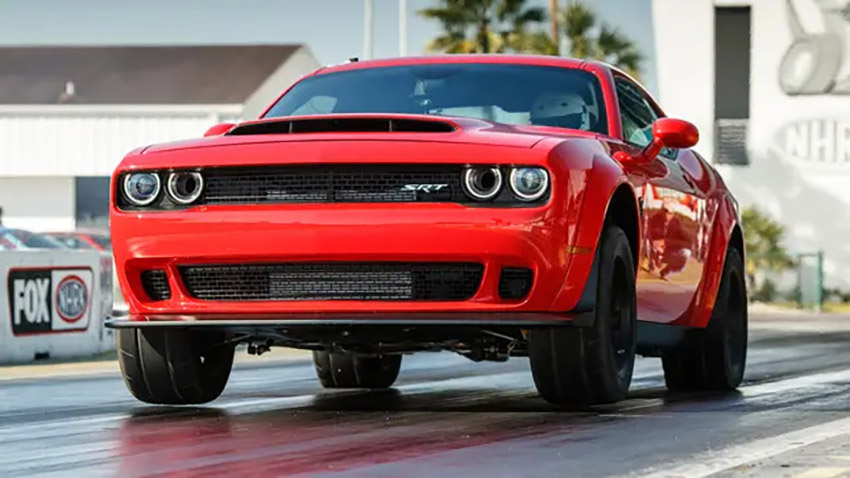
Dodge Demon
Fast-forwarding to 2018, we find ourselves deep within the modern muscle car renaissance, with Dodge’s line of ever-more insane Challengers and Chargers doing justice to their iconic names. The Hellcat of 2015 was a game-changer when it launched, with its manic supercharged 6.2-litre Hemi churning out a ludicrous 707bhp… and if you thought the Hellcat was nuts, the Demon was just on another level.
The ultimate version of the new-wave Challenger, the Demon was a basically a road-legal dragster that you could buy from a dealership with a warranty. Its 6.2-litre Hemi had a 2.7-litre supercharger on top, giving it a peak power figure of 808bhp on pump fuel. The development team actually designed it to be a production car that could pull wheelies from a standing start, and the specs were insane: 315-section Nitto tyres (on the front!), only one seat – unless you paid a dollar to add the other seats back in, a line-lock, and a ‘Power Chiller’ that hijacked the air-con system to pre-chill the intercooler. Quite possibly the angriest car ever built.
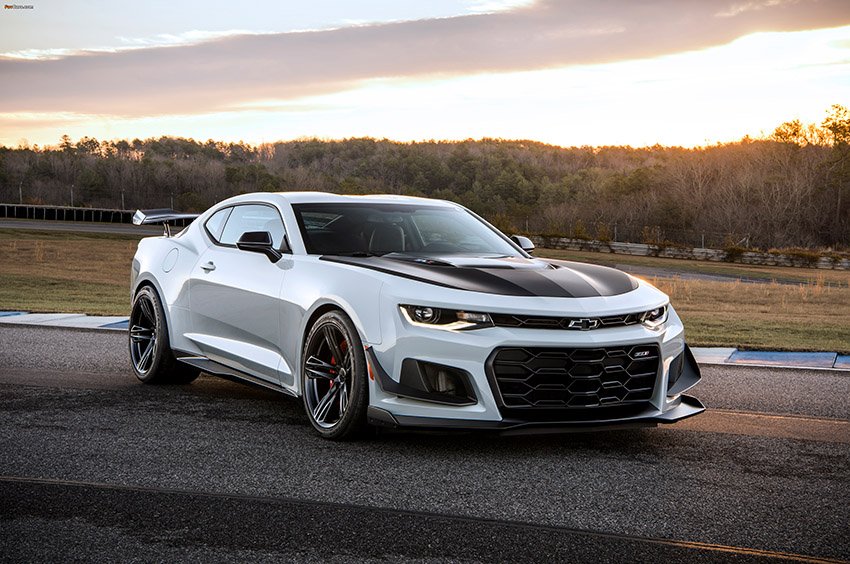
Chevrolet Camaro ZL1 1LE
The Camaro has always been a strong presence in the muscle car scene (indeed, one of our favourite ever cars is the 1969 Camaro Z/28), and the modern-era models are particularly brutal. Uncompromisingly large with equally large horsepower, these imposing coupes really are something special – and when the engineers came up with the ZL1 1LE specification, all bets were off.
This was a muscle car that was built to handle. And that’s never really been this type of car’s forte, so they threw a huge budget at it. The regular ZL1 (although ‘regular’ doesn’t really apply) took the already-impressive Camaro SS and added Magnetic Ride suspension, wider wings to accommodate broader tyres, improved front aero, and a carbon fibre bonnet insert to suck hot air out of the engine bay.
The track-focused 1LE package took things a step further, with Multimatic spool-valve shock absorbers, an aggressive front splitter and huge rear wing, dive planes, and Goodyear Eagle F1 Supercar tyres. So this wasn’t just about dumb horsepower: this was a muscle car that could do 0-62mph in 3.5 seconds, go on to a top speed tantalisingly close to 200mph, and show you a damn good time around the Nürburgring to boot.
And if you thought the ZL1 1LE Camaro accelerated fast, check out Chevrolet’s latest creation, the Corvette E-Ray.
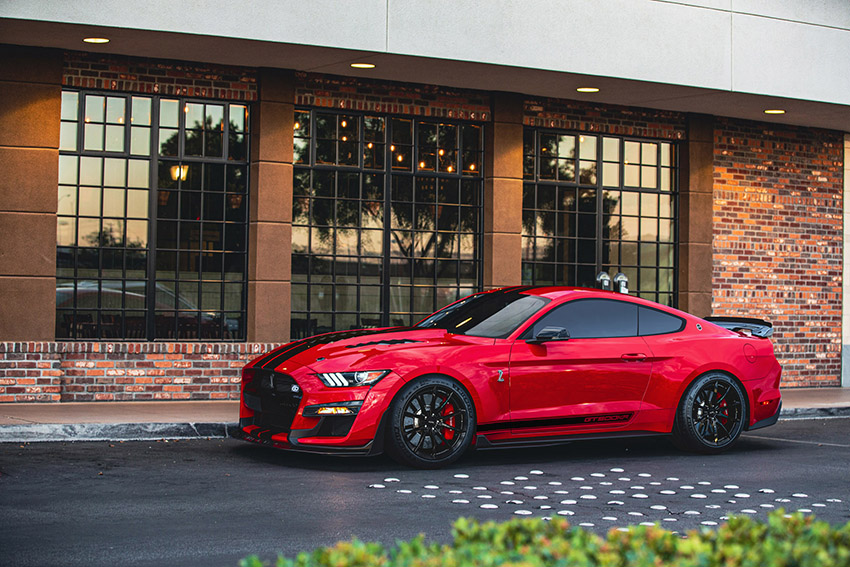
Shelby Mustang GT500 KR
The modern Mustang range is as broad and bewildering as it’s always been, and Ford Performance’s third-generation Shelby GT500 – launched in 2020 – is perhaps the most exciting of the lot. Power comes from a hand-built 5.2-litre V8 of such brutal prowess that it’s been given the official label ‘Predator’; with a 2.65-litre Roots-type supercharger nestling on top, it kicks out a zany 760bhp and makes all kinds of screaming noises. And the GT500 KR is a particularly exciting variant, because this celebrates a legendary nameplate from way back in the early days of Mustang madness; the original GT500 KR launched in 1968, the letters standing for ‘King of the Road’. It had a Cobra Jet motor and oozed effortless menace.
In rekindling this name, Ford decided to build just 180 examples of the Shelby GT500 KR for the 2021 model year: its Whipple supercharger boosted power to over 900bhp, while the exterior was positively dripping in carbon fibre aero addenda. A very modern interpretation of the classic formula.
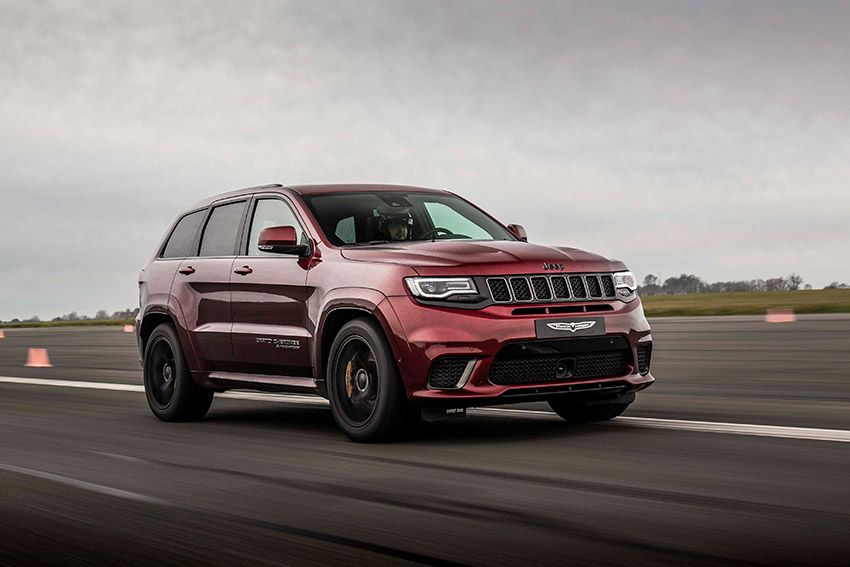
Jeep Grand Cherokee Trackhawk
SUVs are an unavoidable fact of modern life, and – with sports and supercar manufacturers increasingly trying out performance SUVs on an eager market – it was a stroke of genius to blend the huge Jeep Grand Cherokee with the traditional muscle car formula. That’s the type of vehicle people are buying these days, so why not reimagine the muscle car as something larger and more accommodating?
And so the Jeep Grand Cherokee Trackhawk was born. On the one hand, it’s an eminently sensible vehicle – a Range Rover-sized hulk with impeccable equipment levels, staggering off-road capability, and that nebulous aura of safety that every SUV owner craves. But on the other hand, it’s a full-bore muscle car: it’s got the Hellcat hemi from the Challenger, a supercharged 6.2-litre V8 snorting out 697bhp. It’ll do 0-62mph in 3.5 seconds, 0-100mph in 8.8 seconds, and its 180mph top speed is only reined in by the brick-like aerodynamics. The Trackhawk is also ludicrously expensive, but can you really put a price on this sort of adventure? This thing is extremely sensible and practical, but also utterly idiotic. And we can probably all relate to that.

